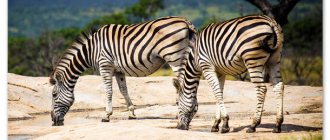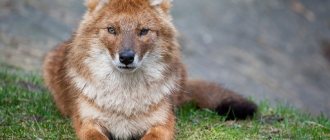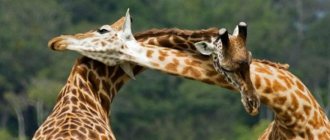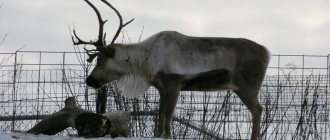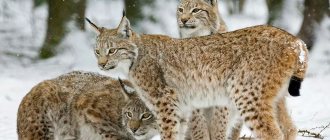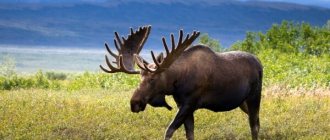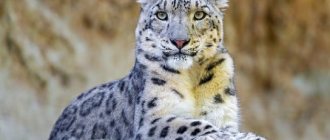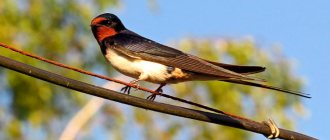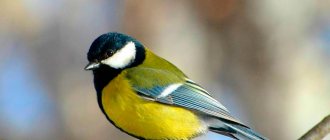- Reports and messages
- Animals
- Reindeer
Since ancient times, the deer has been considered the most beautiful animal of the North.
It is found in this cold environment in Greenland, Siberia, Scandinavia and even the Northern Tundra. This honored resident of the Far North is not afraid of severe frosts. In harsh winters, the deer's body is warmed by its wonderful fur. It grows quite thick and warm, especially in the winter months. Reindeer is quite a large animal. Sometimes their weight can reach 200 kilograms. This species of animal boasts its beautiful horns. Not only males have them; female deer also have beautiful antlers on their heads. Every year, deer shed their old antlers, and after a while they grow new, beautiful and strong ones. In the summer, females renew their antlers, but in the fall it is the males who do this. During the autumn period, all deer tend to shed. Due to this, the renewed wool completely warms them in the harsh winter. Due to their wide hooves, deer can walk for a long time on loose and slippery snow. Sometimes they break the frozen ground with their hoofs and get food for themselves. With the arrival of autumn, there is too little food in the tundra, so the deer are forced to pack up and go into the taiga or forest-tundra so as not to die of hunger. They can roam for about 2 months. Deer gather in a herd and set off on a journey. Wolves always walk behind such a herd, as if they are waiting for a weak or sick deer to lag behind the rest. Wolves are the only enemies of deer. Reindeer prefer to eat grass and moss. Therefore, they occupy an area with an abundance of food. And when it ends, they move on. They like to eat lichens, this is more so in winter. And in the summer they have more choice. These are a variety of herbaceous cereal plants. Reindeer do not refuse to taste young branches from the tree.
When summer comes, deer give birth to offspring. The weight of a small fawn is up to 7 kilograms. On his small head you can already see the bumps, which will eventually turn into luxurious horns. Northern summer is a favorite time for local reindeer. They leave everything and go closer to the sea. They really like sea water; for its sake, deer are ready to overcome any obstacles. Reindeer need salt, which is completely absent in winter. Therefore, they consume sea water to replenish salt reserves in the body. Reindeer are excellent swimmers; it will not be difficult for them to overcome a strait or a cold river. As always, their fur will keep them warm.
Reindeer can be tamed, but still, a person follows the deer, and not vice versa. Reindeer serve people as a means of transport, people use reindeer milk for cooking, but the skins are used to make warm clothing. Even tamed deer require a lot of care, because at any moment he can drop everything and run away into the endless tundra. We know little about reindeer. The local population of the tundra and the northern edge of the world know best about them. And we can only read about them in books. Still, for northern residents, deer are indispensable helpers in everyday life. People harness them to sleds and move long distances. Northern people value reindeer very much; they follow them everywhere.
Report Reindeer
Among the largest representatives of the artiodactyl world, distinguished by an elegant body, agility and grace, the reindeer takes pride of place. These trusting representatives of animals have impressive height and weight. The height sometimes reaches two meters, weight up to two hundred kilograms. Its elongated muzzle, short ears, well-defined eyes and long neck prevent it from being confused with other representatives of the fauna.
Reindeer are characterized by a gray coat color, which becomes closer to white in winter. Depending on the time of year, its color changes, acquiring a brown tint by summer. In addition, with the onset of cold weather, the coat becomes thick and almost does not get wet, which saves the animal from dampness and cold. In spring, the coat sheds and noticeably thins, becoming shorter.
Despite its strong body, the reindeer has short but strong legs, thanks to which it can pass through any obstacles. Wide hooves prevent them from falling into a swamp or snow; they also make it easier to find food under a layer of snow, loosening it. The branched antlers of a deer have their own characteristics. Both males and females wear massive jewelry. It is also characteristic that the size of the horns continues to increase throughout his life, until old age. Majestic beauties shed them once a year. However, the new horns differ from the previous ones in a more complex shape.
Herds of reindeer, changing their habitats from time to time, feed on shrubs, berries, trees and mushrooms. Moreover, at the end of spring the tundra welcomes them with a wide variety of food. They return in the summer. In winter, they have to look for food under the snow. The herd lifestyle saves deer from predators and creates favorable conditions for migration to the south in the fall.
Thanks to the endurance and flexibility of these animals, in addition to living in the wild, they can live quietly next to humans. They can be found in the taiga, tundra, on hills, on the outskirts of forests, in cedar-larch forests and closer to rivers.
Reindeer is one of the representatives of the Red Book. It is protected by nature reserves, as the number decreases significantly every year.
1st, 2nd, 3rd, 4th, 7th grade from the red book
We've arrived
We crossed one mountain, a second, and on the third there were no longer fir trees growing, but huge cedars with broken tops. The bears broke them off to get to the cedar cones.
There is still a mountain ahead. Nothing grows on it: all the earth was blown away by the wind, only stones remained.
I wanted to ask Choda if we would get there soon, but I didn’t have time. Below, under the mountain, I saw white mosses... and in the moss, like boats on the waves, deer backs and antlers swayed. We went down to the tent on the bank of the stream. Behind the plague... At first I thought it was a whole forest of burnt bushes, but when I looked closer, it turned out that there was a herd of deer lying there, and it wasn’t bushes, but antlers. There are so many horns here! Both the tall ones are long and the branched ones are wide, and one deer has so many shoots that they bend down behind the ears.
Logs lie in rows on the ground, and fawn fawns are tied to the logs. The horns of murrelets are like two bushes overgrown with soft black moss. They are not allowed together with large deer. A big deer will run away from a bear, but a fawn is still weak. And the eyes of deer are kind and sad.
Popular message topics
- Daisy
Daisy is a perennial plant, a member of the Asteraceae family. In total, this genus includes 14 species, of which only a few grow in Russia (the western part and the Caucasus); most species grow in Europe, - The Caucasus in the life and work of Lermontov
The Caucasus occupies a very important place in the works of Russian writers of the 19th and 20th centuries. Many writers decided to leave big cities (sometimes of their own free will, sometimes not), change their surroundings and look for inspiration in the Caucasus. And we can say - Manul
Manul is a member of the cat family, being the smallest wild cat in nature, in many ways inferior to the tiger or lion. This species was discovered in 1776 by the German scientist P.P. Pallas. Pallas's cat lives in Russia, Central and Central Asia,
White dog
The dogs barked and ran towards us. I thought they would bite, they were so big and fierce. We got off the horses, the dogs rushed and began to jump on us and lick our hands, and one white dog squealed with joy and bit my leg.
I asked Choda why they were so happy.
“They’re bored, so they’re glad we came!”
Chodu shouted at the white dog, she tucked her tail and walked away. I felt sorry for her, and Chodu said:
“The trouble is with this white one, the deer see it from afar and won’t understand what kind of animal it is.” They get scared, run... then look for them!
I still felt sorry for this dog: what was it to blame for the fact that it was white?
Reproduction and offspring
The mating season for reindeer lasts from October to November. During it, numerous fights begin among the males, which rarely lead to the death of one of the combatants. They are trying to prove their strength and health in order to be worthy successors of the family. The strongest of the winners can give birth to 10-15 females.
Pregnancy in a doe lasts 8 months. Fawns are born in May or June. Usually only one calf is born. Occasionally there are cases of twins. Immediately after their birth, the female sheds her antlers. For deer, this moment passes after the rut.
A newborn calf is born stronger and protected from the cold. On the first day, he weighs 6 kg. The baby is growing quickly and within two days he is running after his mother. Two weeks later, his horns emerge.
The average life expectancy of Reindeer is 25 years. Males become sexually active at 2 years of age. Until this age, their mother looks after them.
Princeling
All night long the branches in the fire crackled, the crackling now moving away and then coming closer. And suddenly the plague itself starts to crackle! I thought the fire had reached the chum, and I jumped out into the street, but it wasn’t fire at all, it was the deer’s hooves that were crackling with every step. I fell asleep peacefully. This morning I was woken up by deer. They banged their horns on the wall of the tent and asked for salt. Deer love salt very much. If the deer is half-wild, they give him a little salt from the palm of his hand, and he is tamed.
During the day, all the deer ran around the smoke-fire. The wind blew the smoke in one direction, towards the ground, and the Eleni took turns running into the smoke, driving away the midges and mosquitoes.
A huge herd ran silently around the fire, only the sounds of hooves cracking and horns knocking against each other could be heard.
There was one deer in the herd, completely white as snow. They call him Prince. He is proud, like a real prince. And the horns on his head grow like a crown. I counted sixty-four shoots. A bag of wet salt was drying near the chum, and the earth became a little salty. The prince licked the salty soil all the time, and drove away other deer. Only he didn’t hit with his horns, but raised his front hoof and scared him. And all the deer obeyed him.
One day the deer came running to the plague, but the Prince did not!
Chodu went to look for him and found horns and scraps of white fur far in the mountains.
The prince was eaten by a bear. He hid behind a cedar tree, killed Prince, grabbed him with his front paws and carried him to the mountains.
Chodu immediately recognized it from the tracks: there was no white fur on the ground, only bear tracks from the hind paws. The prince died because he went alone to the mountain lakes. The water in the lakes is blue, and the cold wind from the mountain peaks rings in the lonely cedars.
Kinds
There are several species of Reindeer in the world. They are divided by habitat, changes in body structure and appearance.
To begin with, the division occurs across continents. Here we can distinguish North American (caribou) and Eurasian individuals. In the first case, there are no particular differences between animals living in Alaska, Canada or Greenland. And the second one needs to be considered more carefully. Here are its main representatives:
- The Siberian Forest is one of the largest representatives of Eurasian individuals. The winter color is dominated by sandy and red shades. The fur is short. The horns are thin and weak. Habitat: Urals, forest zones of Siberia, northern Mongolia.
- Siberian Tundra - slightly smaller than the previous species. Winter fur, very light. Dark spots are present on the sides. The fur is long and very thick. They live on the remains of the Arctic Ocean, in the Siberian Tundra.
- Novozemelsky - smaller than Siberian Tundra. The shape of the skull is narrow and elongated. Winter fur is white. Occasionally there are dark spots. The fur is the thickest and longest among all species of Eurasian deer. They are found in Yamal and various places of the Siberian Tundra. It is very similar to North American individuals.
- European - in size does not exceed Novaya Zemlya. The coloring is clearly demarcated. There are light and dark zones. Live in Sweden, Finland, Norway.
- Okhotsk - the largest representatives of the Eurasian species. The skull is very large and massive. Winter color is dark brown. White spots on sides and neck. They are found in Kamchatka, the Amur Territory, Sakhalin, and the north of the Ussuri Territory.
This is an approximate list of differences and places where reindeer live.
Also, the Domestic Reindeer can be distinguished as a separate species. They, in turn, are divided into special types. For example, Nenets individuals are short in stature, but have great endurance compared to other species. They are used in sleds.
The Evenki breed, on the contrary, is tall. They carry various cargoes. And Even deer are bred for milk, skins and meat.
Nutrition
Reindeer are herbivores, which means they eat exclusively plant foods. The summer diet of deer consists of grass, sedge, green leaves of bushes and young shoots of trees. In autumn they switch to mushrooms and foliage. During this period, an adult deer, according to the San Diego Zoo, eats about 4-8 kg of vegetation per day.
In winter, their diet is rather meager and includes mainly high-carbohydrate lichens and mosses, which they extract from under the snow cover. Nature made sure that females shed their antlers later than males. Thus, they protect their meager food supplies from outside attacks.
Red Book
The Ussuri sika deer is a rare species of animal and is listed in the Red Book. The habitat of this species is the southern part of China, as well as in the Primorsky Territory in Russia. The total number of individuals does not exceed 3 thousand heads.
The Red Book is an official legislative document; it contains a list of animals and plants that are in danger of extinction or extinction. Such animals need protection. Each country has a red list, in some cases a certain region or region.
In the 20th century, sika deer was also included in the Red Book. Hunting for this species is prohibited; if a sika deer is killed, it will be considered poaching and punishable by law.
In Russia, the Ussuri deer is restoring its numbers in the Lazovsky Nature Reserve, as well as in the Vasilkovsky Nature Reserve. In the 21st century, it was possible to achieve stabilization and increase in the number of this species.
Where does it live?
In the 19th century, sika deer lived in northeast China, North Vietnam, Japan, and Korea. Today, the species remains mainly in East Asia, New Zealand and Russia.
In the 1940s, sika deer were resettled in the following reserves:
- Ilmensky;
- Khopersky;
- Mordovian;
- Buzuluksky;
- Oksky;
- Tebedinsky.
Sika deer prefer the southern and southeastern slopes of the coastal ridges; snow lies on them for a short time in the winter season. Young animals and females prefer to live closer to the sea or lower down the slope.
